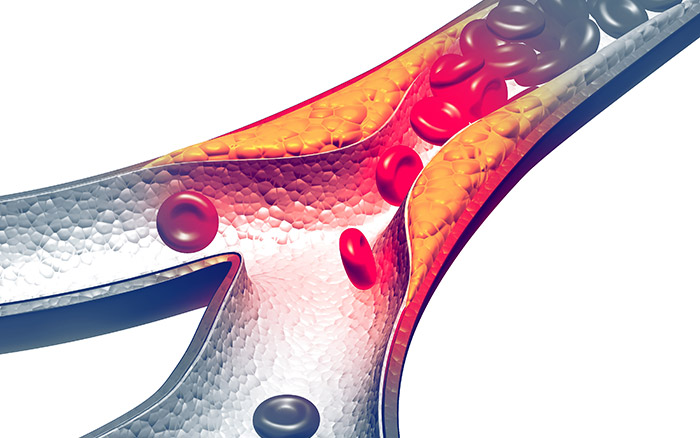- Home
- About Us
- Advanced Testing
- Nutrition & Self-Care
- Further Learning
- New Member Info
- Contact
This test will determine if your arteries are "on fire." Lp-PLA2 is an enzyme marker of plaque forming, cracking, or shifting . . . but unlike hsCRP, Lp-PLA2 is vascular-specific (and is not affected by smoking). 8 Due to its pro-inflammatory and pro-oxidative effects, Lp-PLA2 plays a key role in the pathogenesis of atherosclerosis (plaque build up in the arteries). It is localized in the necrotic lipid core of the plaque (below the collagen or calcified cap) so it is associated with soft, active, rupture-prone plaque (as opposed to stable calcified plaque).
Lp-PLA2 is produced by inflammatory cells (macrophages, T-cells, and mast cells) and is primarily bound to LDL cholesterol. The Lp-PLA2 enzyme plays a role in the oxidation of these LDL particles into atherogenic substances. 2 These substances are known triggers in the inflammatory cascade, and they accumulate in the intimal wall (inner lining of the artery). This leads to the development of foam cells, which in turn progresses into fatty streaks (the first sign of atherosclerosis). 5

A meta-analysis involving a total of 79,036 participants in 32 prospective studies found that Lp-PLA2 levels are positively correlated with the risk of developing coronary heart disease and stroke. 3 This increased risk of cardiovascular (CV) disease is independent of LDL-C and other inflammatory markers. 7
According to the ARIC trial, the stroke risk goes up from 2-fold to 11-fold when hsCRP is also elevated. 6 And when Lp-PLA2 is elevated in conjunction with systolic blood pressure, the patient has a 7-fold increased risk of a CV event or stroke.
LpPLA2 is now included in four major international society guidelines: 5
The American College of Cardiology, the American Heart Association, the American Association of Clinical Endocrinologists, and the European Society of Cardiology all agree that measurement of Lp-PLA2 activity is useful for risk stratification of asymptomatic adult patients. 5
Do something today for a better tomorrow!
Make an appointment now for advanced testing. We are here to help.
REFERENCES
1 – Davidson MH, Corson MA, Alberts MJ, et al. Consensus panel recommendation for incorporating lipoprotein-associated phospholipase A2 testing into cardiovascular disease risk assessment guidelines. Am J Cardiol. 2008;101(Suppl):51F-57F.
2 – https://www.sciencedirect.com/science/article/pii/B9781416054696500184
3 - Thompson A, Gao P, Orfei L, Watson S, Di Angelantonio E, Kaptoge S, et al. (May 2010). "Lipoprotein-associated phospholipase A(2) and risk of coronary disease, stroke, and mortality: collaborative analysis of 32 prospective studies". Lancet. 375 (9725): 1536–44. doi:10.1016/S0140-6736(10)60319-4. PMC 2864403. PMID 20435228. Lay summary – BBC News.
4 - https://www.ncbi.nlm.nih.gov/pmc/articles/PMC2882946/
5 - https://www.ncbi.nlm.nih.gov/pmc/articles/PMC4620072/
6 - https://www.ajconline.org/article/S0002-9149(08)00714-5/pdf
7 - https://www.ahajournals.org/doi/10.1161/01.CIR.0000154553.12214.CD
8 - https://www.ncbi.nlm.nih.gov/pmc/articles/PMC1994000/